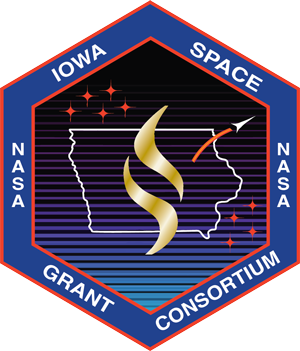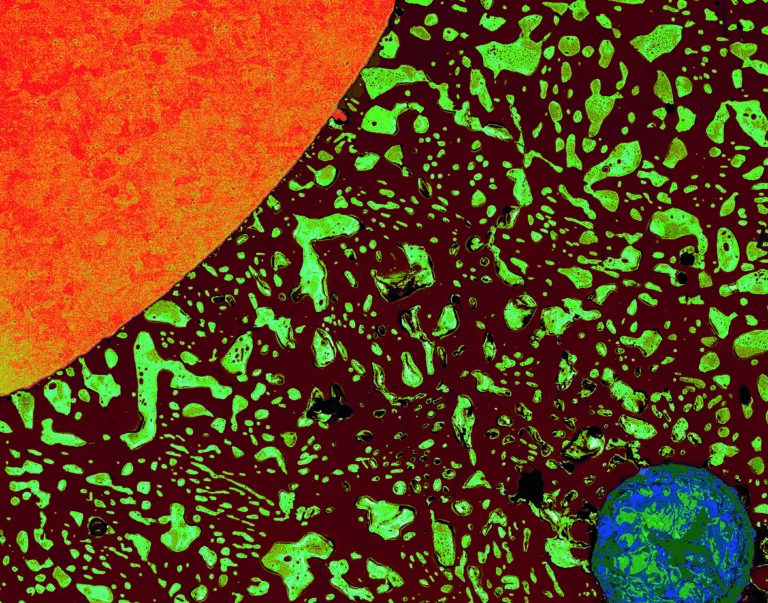No, you’re not looking at an abstract painting of the sun and the Earth. This is a photograph (micrograph)!
Iowa State University associate professor of Materials Science and Engineering, Dr. Sid Pathak and lead researcher, Dr. Manish Kumar captured this image not in outer space, but under an electron microscope.
Their research studies the structural properties of solders in both terrestrial and microgravity environments. Soldering involves the melting and solidification of materials, typically metal alloys, to join electrical conductors.
Pathak’s team aims to understand how the outer-space environment, devoid of physical forces such as Earth’s gravity, affects lead-tin solders on a microscopic level. They also want to understand how these changes alter the performance of solders in the extreme cold and hot conditions found in the vacuum of outer space. The aim is to improve the soldering process on Earth while also understanding how it can be used to support repairs in deep space and to address repair needs critical for long-duration exploration missions beyond Earth’s atmosphere.
This photo, taken by Kumar, is featured in NASA’s 2025 calendar and shows part of a solder bead taken from the International Space Station (ISS). The large orange quadrant in the upper left corner is the copper wire, while the blue and green sphere in the bottom right corner is a void space. The green and brown spaces in between are conventional solder aggregates.
This year’s NASA calendar is all about the building blocks of life and our universe. Many of the photos showcase how the smallest forms of being, such as organic and inorganic chemicals, cells, and microorganisms, change the way we see life in the cosmos. NASA’s missions aim to understand how these building blocks affect our universe and how they can be utilized for the benefit of humanity.
“We are proud that this transformative research is taking place right here in Iowa.” Dr. Pathak stated. The results of his study has already been used in NASA’s deep space missions.
Pathak has received many awards for research and teaching, including the National Science Foundation’s CAREER award in 2024 and the Defense Advanced Research Agencies Young Faculty Award in 2019.
Manish Kumar recently obtained his Ph.D. at Iowa State University from Pathak’s research group. For his PhD research in solders Kumar was awarded the Brown Graduate Fellowship in 2024 and the ISU Research Excellence Award in 2025. He also presented his research at numerous conferences across the country including the American Society for Gravitational and Space Research meeting in Washington D.C. and the International Mechanical Engineering Congress and Exposition in Philadelphia, PA.
This research project is funded through NASA Physical Sciences Informatics, NASA EPSCoR, and Iowa Space Grant Consortium.

